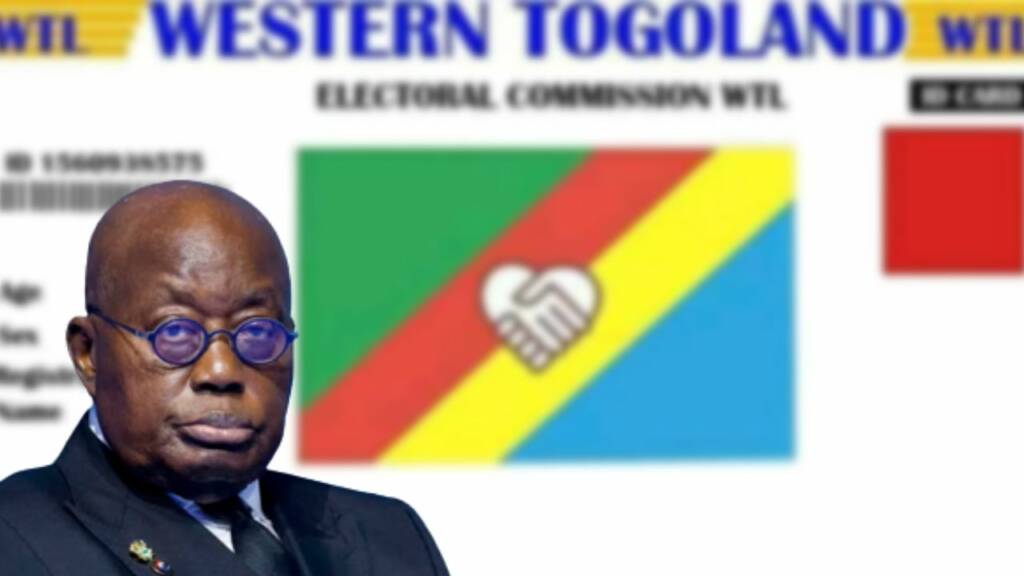Since the decolonization process ended, Africa has witnessed the emergence of many secessionist movements. However, only two countries, Eritrea in 1993 and South Sudan in 2011, have successfully achieved full independence.
Despite this, secessionist movements have persisted in Africa, and in recent years we have seen conflicts such as Biafra, Western Sahara, and the Tigray crisis. Another long-standing secessionist movement has also resurfaced in the heart of Ghana. So, how did this movement begin, and what does the future hold for Ghana?
Western Togoland Issue
The Western Togoland region is mainly comprised of the Volta region in Ghana, along with some areas in the Oti, Northern, North East, and Upper East Provinces of Ghana. However, Western Togoland is internationally recognized as part of Ghana.
After World War I, the winning powers divided the African colonies of a defeated Germany, including the small protectorate of Togoland. The Protectorate of German Togo was split between the British, who took control of what is now Western Togoland, and the French, who took control of present-day Togo. The artificial partition was rejected by the Ewe people, who were divided into two different territories. The Ewe population is torn between Ghana and Togo, with Ghana having the largest population of Ewe people at 6 million and Togo having the second largest population of 3.1 million.
Read More: It’s official, USA sponsored TPLF
During the decolonization period in Africa, the UN called for a plebiscite on Western Togoland to determine whether it would become independent or join a union with the Gold Coast (now Ghana) after the latter’s independence. Organized by Great Britain, the plebiscite showed a majority of votes in favor of union with the Gold Coast, and upon Ghana’s independence in 1957, Western Togoland was incorporated into the new state. Although the option of unifying with Ghana won with 58 percent of the vote, the southern Ewe regions voted in favor of remaining under a UN mandate.
After the unification, Ghana’s President Kwame Nkrumah advocated for the integration of Togo as a seventh region of Ghana. However, the Togolese government opposed the division of Togoland and the Ewe people. Instead, the then-Togolese President Sylvanus Olympio called for the unification of Western Togoland with Togo, creating strong tensions between both countries. However, the tensions eased after the assassination of Olympio in 1963.
Read More: The Biafra Enigma: Decoding the Roots of Nigeria’s Separatist Movement
Since then, many Ewe people have continued to fight for the right to self-determination. In the 1970s, the National Liberation Movement of Western Togoland (known as Tolimo) gained popularity after filing an official complaint to the Organization of African Unity supporting the unification of the former British Togoland with Togo. This was an Ewe-led movement, spurred by alleged Ewe repression by Kwame Nkrumah due to the more restrictive border with Togo, along with generally poorer socio-economic conditions in the region. However, Ghanaian government suppression and the decrease in Togolese government support since 1978 resulted in the movement entering a phase of lethargy until its recent comeback under the leadership of new groups.
Recent development
In 2020, an area in eastern Ghana declared itself a sovereign state, with armed men blockading major entry points to the Volta region and demanding the secession of Western Togoland from Ghana. The Western Togoland Restoration Front (WTRF), an Ewe separatist organization, also published photos of a graduation ceremony for around 500 personnel who underwent months of training in secret locations. The movement aims to force the Ghanaian government to engage in United Nations (UN)-facilitated negotiations for the independence of Western Togoland.
The region is also a member of the Unrepresented Nations and Peoples Organisation (UNPO). The sentiments of secession are fuelled by the perception that locals in the region are underrepresented in Ghanaian authorities. A previous unsuccessful attempt to declare Western Togoland independent from Ghana occurred in 2017 when the Homeland Study Group Foundation unsuccessfully tried to declare independence. There were speculations that the group had a militia, but a national executive of the group, Emmanuel Agbavor, had rejected the claims.
Read More: France’s geopolitical calculations and the Biafra question: Unraveling the puzzle
What the future holds?
African countries have struggled with democracy, and the ethnically diverse continent is beset with conflicts and crises. However, today, the continent is on the precipice of a golden future. For that future to be achieved, political stability, peace, and progress are undeniable preconditions that the continent must fulfill. In recent times, we have seen that the continent is finally moving towards conflict resolution and peace. For example, recently, Ethiopia has been able to bring some resolution to the crisis and this brings some ray of hope for all other crises in the continent.
Read More: Biafra Unchained: Breaking Free or Breaking Down?
The continent needs a strong economic and political foundation, but continuous crises may attract Western powers like bees to honey – and we all know how that ends. Ghana, already in the crosshairs of Western influence in the Sahel region, must beware of the Western Togoland issue becoming their Achilles heel. While addressing concerns of alienation and discrimination in the region, Ghana should also avoid any Western meddling in their internal affairs – it never ends well for Africa. With strong and visionary leadership, Ghana can build trust with the Ewe people and achieve lasting peace in the region.
https://www.youtube.com/watch?v=1CfnOsrp1Yg&t=1s
